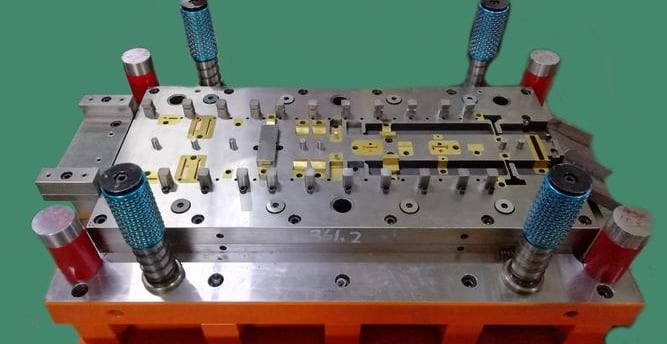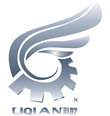Risk Management and Control During Mold Development
3/3/2025


Understanding Mold Development
Mold development is a biological process that involves the growth of microscopic fungi, which thrive in damp and warm environments. The fundamental mechanism behind mold growth is the reproduction of mold spores, which are released into the air and can settle on surfaces. When mold spores encounter moisture, suitable temperatures, and organic materials, they begin to germinate, leading to visible mold colonies. The primary factors contributing to mold proliferation include moisture content, temperature, and the presence of organic matter.
Moisture is perhaps the most crucial factor in mold development, as fungi require water to grow. High humidity levels, leaks, or standing water can create an ideal environment for mold to flourish. It is essential to monitor areas prone to moisture, such as basements, bathrooms, and kitchens, to prevent mold establishment. While temperature varies, most molds prefer warmer conditions, typically between 60 to 80 degrees Fahrenheit. Understanding this temperature range enables effective control measures, particularly in spaces where heat accumulation may occur.
The organic material provides a food source for mold, as it can metabolize various substrates, such as wood, paper, and drywall. Consequently, any material in contact with moisture is susceptible to mold growth, which can lead to structural damage and health hazards. Various types of mold exist, with some, such as Aspergillus and Stachybotrys (commonly known as black mold), having the potential to produce mycotoxins that pose health risks to humans and animals. Symptoms of exposure can range from mild allergic reactions to severe respiratory ailments, depending on the type and amount of mold present.
Understanding mold development requires a nuanced consideration of biological mechanisms and environmental conditions. Effectively managing these molds necessitates recognizing their growth requirements and potential health impacts, emphasizing the critical role of risk management in mitigating the risks associated with mold development.
Identifying Risks Associated with Mold Growth
The proliferation of mold in indoor environments poses significant risks, particularly concerning health, structural integrity, and economic ramifications. Understanding these risks is crucial for effective risk management and control during mold development. Mold species can release airborne spores and mycotoxins that may adversely affect human health. Prolonged exposure to mold can lead to respiratory issues, allergic reactions, and more severe conditions, particularly for vulnerable populations such as children, the elderly, and individuals with preexisting health conditions. Symptoms may range from mild irritations, such as sneezing and skin rashes, to serious respiratory illnesses.
Beyond health implications, mold growth threatens the structural integrity of buildings. Mold thrives in damp conditions, often exacerbated by leaks, poor ventilation, or high humidity levels. Over time, affected materials such as wood, drywall, and insulation can deteriorate significantly, leading to potentially costly repairs. If not addressed promptly, mold can compromise the stability of structures, requiring extensive remediation efforts and increasing the financial burden on property owners. This highlights the importance of regular inspections and proactive measures to mitigate moisture levels in susceptible areas.
The economic implications of mold infestations can be far-reaching. Property values may decrease as homes or commercial spaces become associated with mold-related issues. Additionally, insurance claims may rise, leading to increased premiums. Prevention and early detection are key to minimizing these financial impacts. Signs of mold presence include musty odors, visible mold colonies, or discoloration on surfaces. Conditions that elevate the risk of mold growth range from flooding and leakage to inadequate ventilation and poorly insulated areas. By recognizing these indicators and risk factors, individuals can take proactive steps to protect their health, property, and finances from mold-related threats.
Risk Management Strategies for Mold Control
Mold development poses significant health risks and structural damage if not properly managed. Implementing effective risk management strategies is crucial in mitigating these risks and controlling mold growth. One of the most essential preventive measures involves maintaining appropriate humidity levels within indoor environments. Humidity levels between 30% and 50% are ideal for inhibiting mold growth. Utilizing dehumidifiers in areas prone to moisture, such as basements and bathrooms, is a practical step to reduce humidity and the potential for mold issues.
Proper ventilation also plays a vital role in mold control. Ensuring adequate airflow in spaces, particularly those with high moisture content, can significantly decrease the likelihood of mold. This can be achieved through the installation of exhaust fans, opening windows when weather permits, and implementing air circulation systems. Regular inspections of both residential and commercial properties are imperative for early identification of mold risks. These inspections should focus on areas like plumbing, roofing, and foundations where moisture intrusion is common.
In addition to preventive measures, having a remediation plan for existing mold problems is equally important. Safe removal techniques should always be employed to avoid spreading spores during the cleanup process. Homeowners and building managers should consider hiring certified mold remediation professionals who are well-versed in the protocols for safe removal and containment of mold.
Furthermore, the use of various mold control products, such as mold inhibitors and encapsulating agents, can be effective in preventing mold from re-establishing after remediation. Creating a comprehensive mold management plan that includes preventive actions and remediation strategies will significantly enhance the safety and health of the environment, keeping mold growth at bay while ensuring peace of mind for occupants.
Monitoring and Continuous Improvement in Mold Management
Effective mold management necessitates a proactive approach that includes constant monitoring and ongoing adjustments to risk management strategies. As mold spores can proliferate in favorable conditions, it is vital to evaluate mold risk factors continuously throughout various environments, whether they be residential, commercial, or industrial. Regular monitoring allows organizations to identify potential issues before they escalate and to maintain optimal conditions to deter mold growth.
To facilitate effective monitoring, organizations can implement a combination of quantitative and qualitative assessment methods. Regular inspections, moisture level assessments, and air quality measurements can provide valuable data regarding the presence and risk of mold. Additionally, utilizing technology—such as sensors and specialized software—can significantly enhance these monitoring efforts. Sensors can accurately measure humidity, temperature, and other environmental conditions that are conducive to mold development. This data can then be integrated into a centralized system, providing real-time insights that are crucial for informed decision-making.
Moreover, fostering a culture of continuous improvement within mold management practices is essential. This means not only acting on the data collected but also remaining adaptable to new insights and changing conditions. Organizations should establish regular review periods where data is analyzed, and strategies are recalibrated based on current conditions and past results. By examining patterns and trends in mold growth, organizations can refine their approaches to prevention and control, ensuring that they are operating under the most efficient and effective practices possible.
Through a combination of diligent monitoring, ongoing assessments, and the effective use of technology, organizations can successfully manage and mitigate mold risks. This continuous improvement process is vital, as it not only mitigates the immediate risks associated with mold but also enhances overall environmental health and safety standards.
